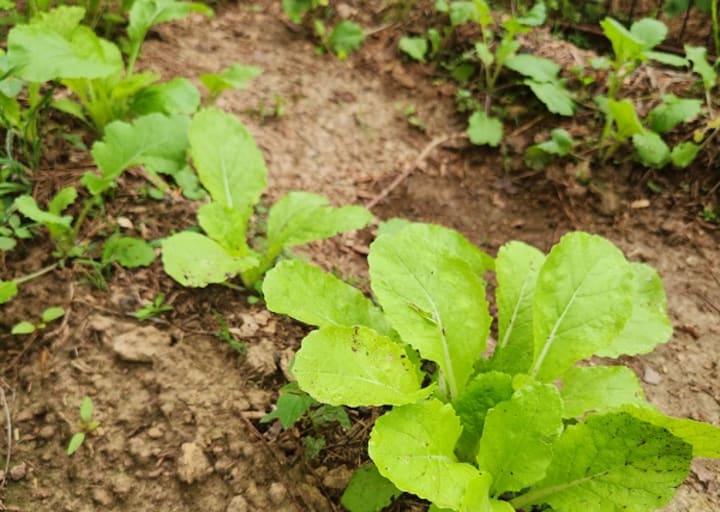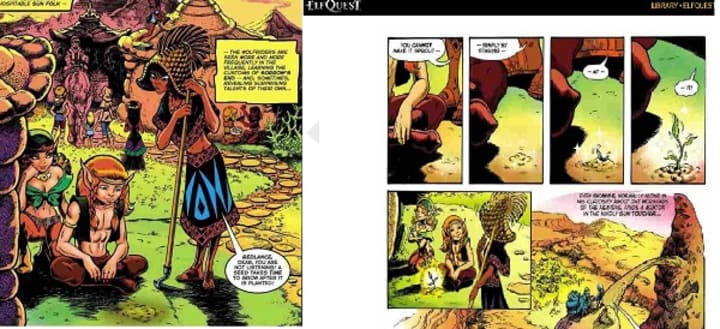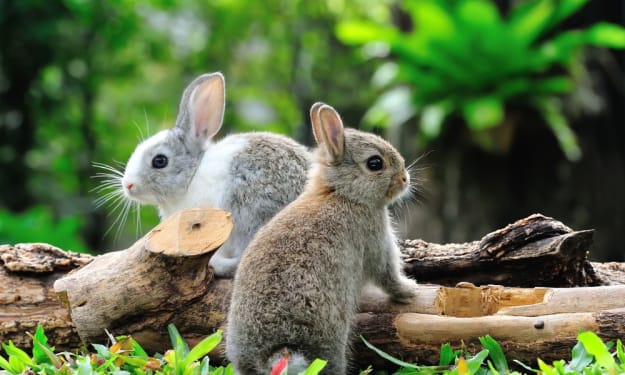
As I sit here, getting ready to write, it occurs to me that I am blessed. I don't have a perfect life, not by any means. Last week, such a tough one, was testament to that. Fortunately, we came through it. No one died, although my car was comatose for a bit, and I'm capable of smiling and shaking my head about it as I sip my coffee, cooled by fresh goat milk. I've just come inside from the garden, where I've spent a half an hour walking, weeding, taking pictures, and getting adoration from my cat, Little Brown. I've done my morning walk-by with the goats, and, as soon as I'm done here, I'll be out to milk Sunshine.

It's a good life, when it's all good. Peaceful, for the most part. The most regular parts of my schedule are writing and milking, the rest takes care of itself. Unless I'm going to town or doing my per diem work for Donna, outside stress is at a minimum. I'm 63 and have finally achieved the peace I've been looking for all of my life. Now, if the goats would just cooperate. It's my firm belief that goat kids spend their 150 days in the womb contemplating how they are going to unalive themselves when they get out. And yet, dairy goats are becoming more and more popular as livestock and as pets as the years go on. There has to be a reason? Right? (Go ahead and humor me . . . agree . . . )
So, why indeed, dairy goats?
Life has never been a cakewalk for me. I won't play the "pity me" game, as some of the hardships I've faced have resulted solely from my poor choices. But at one point, I found myself living in a house with electricity about to be shut off, no car, no water, out of work and out of money. Dan was trying to help me the best he could, but the place that I was living couldn't grow a vegetable if Elfquest's Redlance was tending it. He helped me scrape together a few dollars to get my car back on the road and offered me a couple of rows in his garden, in exchange for some farm chores.

At about that time, Dan heard that one of our mutual friends, an orthodontist with a herd of dairy goats, was looking for a new hand to milk in the morning. Dan suggested that I take over. I had experience tending another family's homestead, where they raised sheep, and had grown up in dairy country (cows). I hated to tell him: I might have played in the dairy when I was a child, but I had never milked the first cow. But there I was, seven o'clock on Monday morning, ready to get my first lesson on goat milking.
I was prepared to hate the goats, given that the only goat I'd ever had contact with was a wethered brush goat who would butt me every time I had to be in "his" territory. However, I was ready to try anything legal to avoid being homeless. I had tried living out of my car once, for less than a week, and found I didn't like it much. It was an experience I'd go at many lengths to avoid, even if it meant being butted by a goat.
We started milking by hand, when only a few does had "freshened;" that is, when they had started to give milk after they had their kids. But it takes a bit of time to milk a full-sized dairy goat by hand. My employer had (and still has) Lamancha dairy goats, a prodigious milking breed. After a half dozen had freshened, it was time to break out the milking machine. Another skill added! By that time, I had come to know all of their personalities. Goats are smarter than you might think, given all their bad publicity and cantankerous can-eating critters. They like order in their lives, like any other living creature, and they will "sweet talk" or bully you into providing it. They are actually thinkers. They can figure out how to reach a scrap of food or ways to escape a pasture that would give Houdini pause. To my surprise, I came to love all of the goats after a very short time. That herd has long since gone, but I love having goats to this day.

After a couple of years, I felt that I was ready to take on a couple of dairy goats of my own. I made arrangements to purchase a pretty little brown doe with Swiss markings, named DeeDee. She was already bred, so I could take her home, with a wether to keep her company, as long as I gave my employer a kid back. "Puppy back" stud fees are common in dogs breeding, so I was already comfortable with that idea. I was able to keep one doe kid that year from DeeDee, giving me the start of my own goat herd. Eventually, we added Lana, a white Lamancha, and Lovey, a little belted brown Nigerian Dwarf, and a smattering of kids. I'm in the process of developing a fully mini herd now, because they will be much easier to handle as I get older. Lamancha does can reach 125 pounds as adults, while minis tend to max out around 50 pounds.
Some Benefits of Having Dairy Goats
Milk: Let's start with the obvious benefit. Goats are remarkable converters of feed to milk. It generally takes about one pound of grain to produce three pounds of milk, if a doe is in good health and has free access to hay. Goat milk, when filtered and chilled immediately after milking, has a taste almost indistinguishable from whole cow's milk. The milk from some breeds, such as Nigerian Dwarfs, Lamanchas, and Nubians, may have a creamier taste due to the higher butterfat content. Fresh goat milk can also be used to make hard and soft cheeses, buttermilk, and yogurt--although goat yogurt may need some thickening with unflavored gelatin.
Size: Compared to a dairy cow, even the largest dairy goat is small. That means that you can fit more of them on the same size property or maintain even a small property with several dairy goats. As long as you have plenty of grass and brush, well-maintained acre can support about a half-dozen dairy goats, while it might take two acres to support a cow. Add free access to hay and that number can increase significantly. Naturally, there's all kinds of things that you'd want to keep in mind, like rotational grazing and buck vs. doe paddocks, but, in general, that's a good ratio to keep in mind.
Shelter: Goats don't care about large shelters--they are perfectly happy hiding under a shelter that's shoulder height to them, just to keep the (acid!) rain off them. You can build a perfectly nice shelter out of wood pallets for Nigerian Dwarf goats. I currently use carports with side panels made from cattle panels, selectively draped with plastic tarps to provide wind breaks. The carport in the buck pen is divided, so that I can put up temporary fencing and rotate pasture, while still giving them a place to get out of the sun and the weather. Full-sized dairy goats need a sturdy shelter, because they will rub against it and try to knock it down. You can still use wood pallets, if you like, but they should probably be stacked and reinforced with a frame.
Brush control: A small herd of goats can clear an acre of brush in a short time. As long as there are no plants that can kill them--like stonefruit trees with wilted leaves--goats can clean your property of unwanted bushes and shrubs, even briars, quickly and without use of herbicides. They will tend to leave plants that can be harmful to them alone, although they will nibble at them occasionally. Sorry, Deep South denizens. They will eat kudzu, but honeysuckle and dog fennel aren't on their top ten list of edible plants!
Expense: Because everything is smaller, including the animals, expenses tend to be smaller, too. With only a few goats, you don't need to build an expensive barn or have an outrageously-priced grain silo. The equipment is a lot less expensive. If you have more than a couple of does, nice portable milking machines can be had for under $750, with permanently mounted machines starting about $1100 or so. You'd expect to pay double that for cow equipment.
Disadvantages of Dairy Goats
Scheduling: Once you have started milking your does, you're locked into milking them twice a day until they are dry; that is, not producing milk because they are taking a break before kidding again. If you have a herd of Nigerian Dwarf goats, that might mean "never," as they are not seasonal breeders like the standard-sized breeds tend to be. You can milk just once a day, if you wish, but your does' production will drop by a third or so.
Disbudding: few things divide the goat community more than disbudding. All goats, with the exceptions of those who are polled, are born with horn buds. After a few days, the horns start to erupt. Unless you want a horned goat (goats can't be shown if they have horns), the horn buds need to be burned away before the kid is two weeks old. Yes, burned. Usually, it's done with a disbudding iron, but caustic chemicals can be used, too. Disbudding must be done early, because if horns are removed in adulthood, it will leave holes in the goat's skull where the sinuses form under the horns. It's ugly. Really. Removing horns can save goats' lives, as those with horns can seriously harm or even kill unhorned goats in the herd. (Ask me how I know!) However, it takes skill to disbud a kid and, if you're like me, you'll take your kids to a farm vet to have them done. Poorly done disbudding can result in malformed mini horns called "scurs." Scurs are generally harmless, but they look terrible and can break off.
Wethering: Wethering is another unpleasant task that needs to be done if you have goats. Even though goat bucks tend to get along pretty well, it's better not to have a bunch of smelly bucks hanging around during the autumn months. Wethering is simply castration, done through banding, surgery, or burdizzo tool. Wethers sell better than bucklings, so that's one good reason for doing it. They can also be used as companions for solitary does, if any need to be isolated.
Sales/expense: When goat keeping became popular, it seemed that everyone was jumping on the Nigerian Dwarf bandwagon. If this breed is the one for you, expect the market to be saturated and the price of kids to be low. It's a great buyer's market, but terrible for homesteaders who are trying to make their goats self-supporting. If you aren't producing enough milk to support your goats, you might have to console yourself that you're saving a bunch of money on milk, cheese, and meat. Yes, meat. Because . . .
Bucklings: A goat kid is not just a goat kid. Does will inevitably give birth to doelings (little girls, YAY!) and bucklings (little boys, pout). Doelings are awesome creatures that, if they are built right and have the right genetics, will go right into the herd to produce more milk and more kids. Prices are generally good for doelings, if you need to sell them. Poor bucklings, however, get the short end of the homesteader's stick. It's rare that a buckling will be good enough to go on to be a herd sire, and there can be only so many wethered bucklings that make it as pets or 4-H animals every year. Unless you want to have a homestead overrun with bucklings, they have to go somewhere. Often, that somewhere is "Camp Kenmore." It's one of those things we don't like to think about, but even dairy goats can produce sufficient meat to make processing them worthwhile. Goat meat tastes roughly like lean beef, without the gamey flavor of some venison.
Sunshine and Buckyboo demonstrate why it's a bad idea to throw a homesteader's packages over the fence. The food dishes belong to the cats, the thing covered by the comforter is my water pump. The PVC near the box are the pipes that I'm using to construct agility jumps, some parts of which are (you guessed it!) in the box.
So, to Sum it Up
This article only covers a few of the advantages and disadvantages of having dairy goats. Books have literally been written on both topics. The biggest advantage to having dairy goats is that you'll always have a reason to get up in the morning. The biggest disadvantage to them is dealing with the reality of their propensity for "unaliving" themselves. Somewhere in the middle are years of and endless supply of stories with which to entertain your non-goat family members and friends.
Sources
I pass on information based on my experience. However, I always like to back up statements of what I believe to be facts with information from credible (yet easy to understand) sources. It prevents me from saying things like "goats need a half can of pellets to fill a water bottle of milk and then some, plus the cats' share."
https://thriftyhomesteader.com/forage-and-feeding-goats/
https://morningchores.com/raising-goats-for-milk/
If you like this story, please consider helping support a goat. For just nineteen cents a day, you can help a little goat like Buckyboo--wait--what?! No, seriously, tips are always welcome, and subscribing is free! Thank you for reading and I'll catch you again soon.
About the Creator
Kimberly J Egan
Welcome to LoupGarou/Conri Terriers and Not 1040 Farm! I try to write about what I know best: my dogs and my homestead. I'm currently working on a series of articles introducing my readers to some of my animals, as well as to my daily life!






Comments (2)
One of the things I love most about Kimberly's stories is her humorous personal asides and her ability to make what might otherwise be dry material into an entertaining story. Why dairy goats indeed? After reading this, I'm ready to go out and get a few for our back yard 😊
Well done on your story.